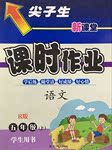题目内容
They ______Hong Kong twice.
| A.have gone to | B.have been to | C.have been in | D.have gone in |
B
解析

 尖子生新课堂课时作业系列答案
尖子生新课堂课时作业系列答案 英才计划同步课时高效训练系列答案
英才计划同步课时高效训练系列答案Crossroads International
1. How does Crossroads work?
Crossroads is a resource network. We take goods Hong Kong doesn’t want and give them to people who badly need them. We collect those goods and give them out in the welfare(福利)center in Hong Kong, Mainland China, elsewhere in Asia, Eastern Europe and Africa. 1
2. Who do we help?
2 They are grass-root groups who have seen a need and tried to meet it. They can’t get the job done without back-up, though, so our task is to help them do their task. Our warehouse is full of goods, from computers to high chairs, clothing to books, stationery to medical provision, cupboards to dining sets. They send us a list of their needs and we try to match it with the resource we have in stock.
3. 3
Crossroads itself also operates on a low budget. We do not buy the goods we send. They are donated. 4 Nobody in our organization receives a salary. Even our full-time staff work on a voluntary basis.
Those that donate goods and services:
●Factories ●Manufacturers
●Hospitals ●Hotels
●Educational Institutions ●Householders
●Transport Companies ●Offices
●Other Charities
5 While we receive large quantities of goods and there is never a short supply of requests for them, we are always in need of hands to help sort and prepare them for shipping.
| A.One resource that we are always in need of is people. |
| B.So Crossroads is just that: a Crossroads between need and resource. |
| C.What can I do? |
| D.The welfare agencies we help do not run on large budgets. |
F. All volunteer work is done at our warehouse.
G.. Similarly, rather than raising funds for freight (货运), we ask transport companies to donate their services.
subways
|
The Tokyo Metro and Toei Lines |
Features: The Tokyo Metro and Toei lines that make up of Tokyo’s huge subway system carry almost 8 million people each day, making it the busiest system in the world. The system is famous for its oshiya- literally, “pusher”- who push passengers into crowded subway cars so the doors can close. And you think your ride is hell. |
|
The Moscow Metro |
Features: The Moscow Metro has some of the most beautiful stations in the world. The best of them were built during the Stalinist era and feature chandeliers(枝行吊灯),marble moldings and elaborate murals(精美壁画). With more than 7 million riders a day , keeping all that marble clean has got to be a burden. |
|
The Hong Kong MTR |
Features: The Hong Kong MTR has the distinction of being one of the few subway systems in the world that actually turns a profit. It’s privately owned and uses real estate development along its tracks to increase income and ridership. It also introduced “Octopus cards” that allow people to not only pay their fares electronically, but buy stuff at convenience stores ,supermarkets, restaurants and even parking meters. It’s estimated that 95% of all adults in Hong Kong own an Octopus card. |
|
Shanghai Metro |
Features: Shanghai is the third city in China to build a metro system, and it has become the country’s largest in the 12 years since it opened. Shanghai Metro has 142 miles of track and plans to add another 180 miles within five years. By that point, it would be three times larger than Chicago “L”. The system carries about 2.18 million people a day. |
|
The London Metro |
Features: Londoners call their subway the Underground, even though 55 percent of it lies above ground. No matter when you’ve got the oldest mass-transit system in the world, you can call it anything you like. Trains started in 1863 and they’ve been running ever since. Some 3 million people ride each day, every one of them remembering to “Mind the gap” |
1.Which one can provide the riders with some wonderful decorations at the stations?
A. The Tokyo Metro and Toei Lines B. The Moscow Metro
C. The London Metro D. The Hong Kong MTR
2. ___________ is done with the purpose of making money.
A . The Tokyo Metro and Toei Lines B. The Moscow Metro
C. Shanghai Metro D. The Hong Kong MTR
3.We can learn from the passage that Shanghai Metro ___________.
A. carries the most people each day
B. is the world’s largest
C. may be larger than the Chicago “L” in the future
D. is the busiest in the world
4.How many subways carry more than 5 million people per day?
A. 2 B. 3 C. 4 D. 5
5.What can be inferred from the passage?
A. Shanghai is the third to build a metro system in China, which has become the largest in the world.
B. You’ll feel sick when you travel on the Tokyo Metro and Toei Lines.
C. Londoners call their subway the Underground because 55 percent of it lies above ground.
D. It is estimated that 95% of the population in Hong Kong own an Octopus card.